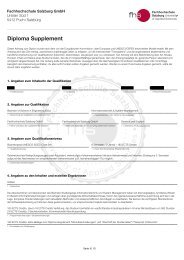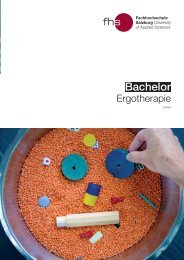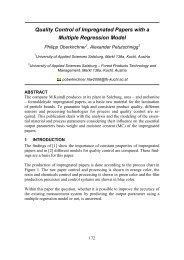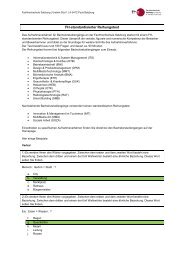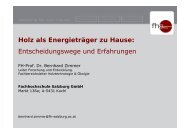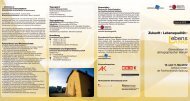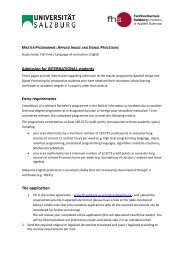Tannin-boron wood preservatives.
Tannin-boron wood preservatives.
Tannin-boron wood preservatives.
Create successful ePaper yourself
Turn your PDF publications into a flip-book with our unique Google optimized e-Paper software.
4<br />
CIMAD 11 – 1º Congresso Ibero-LatinoAmericano da Madeira na Construção, 7-9/06/2011, Coimbra, PORTUGAL<br />
between Bunsen burner and sample has been kept fix at 2 cm and the burning times have been<br />
controlled with a stop-watch. Ignition, flame and embers time have been recorded for each sample.<br />
Ignition time is the minimum exposition time necessary to let the flame self-burn.<br />
The flame time measures how long the sample keeps the flame after 2 and 3 minutes of continued<br />
exposition. Embers time measures how long it takes the sample to completely extinguishes (no<br />
more red spots, no more fumes).<br />
3. Result and discussions<br />
The effectiveness of <strong>wood</strong> <strong>preservatives</strong> is definitely dependent from the chemical substances<br />
that are involved in the protection towards fungus, bacteria, and insects. The use of <strong>boron</strong> based<br />
preservative instead of heavy metal based formulations will depend mainly from the performances<br />
in durability of both. It has already been proved that <strong>boron</strong> based <strong>preservatives</strong> have strong activity<br />
against fungus and bacteria but their durability does not depend exclusively on this parameters.<br />
Durability is the most important characteristic in <strong>wood</strong> preservation and it depends on several<br />
other aspects such as leaching, fire and scratch resistance.<br />
3.1. Wood penetration<br />
Wood penetration is a side property of every formulation for <strong>preservatives</strong>. Easily penetrating<br />
products allow to protect the <strong>wood</strong> structure more in depth. Massive treated <strong>wood</strong> maintains is<br />
properties longer and can better resist the attack from external agents (rain, sun, biologic attacks,<br />
fire and scratches).<br />
Penetration consists of two aspects: the row uptake of preservative and the amount of solid resin<br />
released.<br />
These two parameters are dependent on the physical and chemical features of the preservative,<br />
the impregnation conditions applied and the anatomy of the <strong>wood</strong> species treated.<br />
The figure shown below (Fig.2) reports the uptake trends in tannin based preservative<br />
penetration and solid resin released in beech and scots pine with fixed impregnation conditions.<br />
Figure 2- Penetration and solid releasing trend for tannin solutions in beech and scots pine.<br />
It can be observed that the tannin solutions with up to 30% s.c. can easily penetrate the beech<br />
samples and the impregnation can be considered complete. <strong>Tannin</strong> solutions of 40% solid content<br />
have high viscosity (around 400 cp) and hence they are not applicable as massive/solid <strong>wood</strong><br />
preservative.




